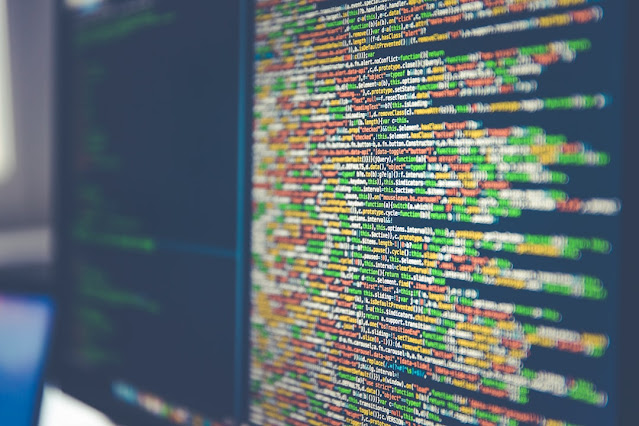the Potential of Blockchain Technology:A Comprehensive Guide
The Future Of Industries: How Blockchain Technology Is Transforming The World
Introduction
Welcome to the digital odyssey of blockchain technology, a phenomenon nudging the world towards a horizon brimming with decentralization and transparency.
This ingenious system is reshaping how industries operate, wielding the power to transform finance, healthcare, and beyond into realms of unparalleled security and efficiency.
Grasping the fundamentals of blockchain is akin to holding a golden key to the future—a future where digital transactions interlace with absolute trust.
As we stand on the cusp of technological revolution, it's imperative to unravel the layers of blockchain networks and peer beyond the buzzwords.
Through this article, we aim to demystify the intricate tapestry of blocks and distributed ledger intricacies. We'll embark on a journey to elucidate the uses, functions, and undeniable benefits that blockchain technology promises.
Fasten your seatbelts; we're diving headfirst into the transformative world of blockchain, where every transaction tells a tale of innovation and every block cements the story of progress.
Understanding Blockchain Technology
Imagine a digital ledger, akin to a communal notebook, that's accessible to everyone yet owned by no one.
That's a blockchain, the backbone of modern decentralized technologies. Unlike the mysterious dark alleys of the Internet, blockchains are transparent and auditable avenues where data security is paramount.
At its core, a blockchain consists of a series of immutable records, called blocks, that are chained together using sophisticated cryptography.
This ensures that once a piece of information is added, it's as unchangeable as a diamond.
Blocks: These are the individual pages of our communal notebook, recording everything from financial transactions to who owned a digital cat at what time.
Cryptography: The secret sauce that turns readable information into a complex puzzle only solvable by those with the right keys, ensuring privacy and security.
Network consensus: Imagine a world where trust isn't given but earned through collective agreement.
In blockchain, this consensus is what validates new entries, making deception as difficult as sneaking a pink elephant into a room of mouse detectives.
Think of blockchain networks as the ultimate democracy of data—a place where every participant has a say, and once a decision is made, it's etched in stone.
This is the quintessential purpose of a blockchain: to provide a trustless system that doesn't require us to trust each other, just the technology.
Use Cases of Blockchain Technology
Imagine a world where financial services operate with absolute integrity, or a supply chain where every product's journey is transparent from farm to table.
This isn't a pie in the sky; it's the real-world magic of blockchain technology. In the realm of finance, cryptocurrency is the poster child with Bitcoin leading the charge, but the rabbit hole goes much deeper.
Supply Chain Management: Blockchain shines as a beacon of transparency, tracing the lineage of products to ensure authenticity and ethical sourcing.
Companies like IBM Blockchain are pioneering this frontier, transforming how goods are tracked and traded.
Voting Systems: Digital democracy is upon us, with blockchain applications ensuring that every vote is a fortress of security, tackling concerns of fraud head-on.
Smart Contracts: These self-executing contracts with the terms written directly into code are revolutionizing agreements in the digital age, slashing red tape, and waving goodbye to middlemen.
In these applications, blockchain isn't just an improvement; it's a revolution, boasting increased security, efficiency, and cost-effectiveness.
From digital asset transactions in the art world to managing private transactions in private blockchains, this tech is the golden key to a treasure chest of possibilities.
How to Use Blockchain
Dipping your toes into the blockchain pool can feel like stepping into a futuristic odyssey. To begin using a blockchain network, whether it's a public blockchain like Bitcoin or a private blockchain tailored for a specific organization, you'll need to understand the structure you're dealing with.
Creating a Blockchain Network: Think of this like hosting a digital block party. You'll establish the rules (the protocol) and invite participants (nodes). For a consortium blockchain, you're collaborating with selected partners, whereas a hybrid blockchain might see you mixing public openness with private permissions.
Accessing an Existing Blockchain Network: To join the fray, you'll typically need a blockchain wallet—your virtual pocket for holding digital assets. Each user gets a public key, like a mailbox address that everyone can see, and a private key, like the key to that mailbox which should be kept secret.
The network's lifeblood is the participants, from the frontline miners, who solve cryptographic puzzles to add new blocks, to regular nodes that uphold the ledger's integrity. Different blockchains will require various degrees of participation, but whether it's blockchain mining in public blockchains or validating transaction details in permissioned blockchains, each user plays a vital role in the ecosystem.
Understanding the blockchain protocols and network members' roles is critical, as is selecting which type of blockchain best suits your needs—be it public vs. private blockchains or considering industry applications. Navigating these digital waters can be thrilling, as you're sailing towards the horizon of evolution of blockchain and its limitless possibilities.
Misconceptions and Concerns Surrounding Blockchain
When venturing into the world of blockchain technology, it's like stepping into a garden of forked paths—there's a lot of directions one can take, and some paths are shrouded in myths and misconceptions.
First and foremost, let's debunk the idea that blockchain is simply a shadowy alley for illicit transactions.
In actuality, the transparency and traceability of distributed ledger technologies make them anathema to the very concept of illegal activity.
Blockchain's cryptographic nature means that every transaction is out there in the open for verification, not tucked away in a dark corner.
Concerns often bubble up regarding the potential destabilization of traditional institutions.
But rather than toppling financial fortresses, blockchain is more like a rising tide, lifting all boats by offering innovative solutions that can be integrated with existing systems.
Yes, there's a whisper of revolution in the air, but it's about evolution too—blockchain adoption can enhance, rather than dismantle, current infrastructures.
Like a puzzle, the challenges such as scalability and integration with other new technologies remain.
Yet, remember, with every new technology there comes a learning curve and the quest for balance—between innovation and regulation, between new horizons and established protocols. The future of blockchain is rife with potential, sculpting a world where transparency reigns and efficiency thrives.
The Future of Blockchain
As blockchain continues to evolve, it stands at the cusp of a new era, poised to redefine how industries operate.
The transformational potential of blockchain stretches far beyond the confines of the bitcoin blockchain; it's a bridge to a more transparent and efficient world. Innovations are not just sprouting in areas like blockchain games or digital currency, but also in promoting sustainability efforts and supply chains that can prove the origin and ethical sourcing of products.
Emerging technologies such as Hyperledger and IBM Blockchain Platform are paving the way for more robust blockchain solutions.
These advancements promise to enhance the scalability of distributed ledger technology, making it more accessible and applicable to a wider range of industries.
The integration of artificial intelligence and the Internet of Things (IoT) with blockchain platforms is not just a plot from a sci-fi movie; it's rapidly becoming reality, further expanding the blockchain use cases into realms we've only just begun to explore.
As we sail into the future, we may see public blockchain networks burgeon, while consortium blockchains and hybrid blockchains offer tailored solutions to specific industry needs.
This blossoming tech garden promises to yield a more decentralized, interconnected, and streamlined global ecosystem, forever altering the landscape of business transactions and peer-to-peer interactions.
With a spirit of curiosity and a dash of caution, let's march towards this brave new world, recognizing the vast ocean of possibilities the blockchain technology presents.
Reminiscent of explorers gazing at the horizon, we stand on the brink of a digital revolution, eager to witness how these blockchains will craft the future fabric of our society.
Conclusion
As we've journeyed through the dynamic landscape of blockchain technology, it's become unmistakably clear that this innovation isn't just a fleeting trend—it's the bedrock for a transformative age.
By enabling secure, decentralized transactions, blockchain is not merely disrupting industries; it's rewriting the rulebook.
We've untangled the complex strings that define blockchain systems, from the intricate dance of cryptographic security to the harmony of consensus algorithms ensuring each blockchain database remains unassailable.
With its tentacles extending into realms like finance and supply chains, blockchain promises a future rich with opportunity, where efficiency and cost-effectiveness are not just buzzwords but tangible outcomes.
As you stand on the precipice of this brave new world, remember that understanding blockchain's benefits and drawbacks is crucial in harnessing its full potential. The call to dive deeper into how blockchain can further revolutionize our lives is loud and clear, and the invitation is open to all who dare to reimagine the boundaries of possibility.
FAQs
- What is blockchain technology and how does it work?
Blockchain technology is a system for recording and storing digital information in a way that is secure, transparent, and permanent.
- How is blockchain technology transforming traditional industries?
Blockchain technology is completely transforming traditional industries by revolutionizing the way data is stored, shared, and secured. With its decentralized and transparent nature, blockchain eliminates the need for intermediaries and allows for direct peer-to-peer transactions.
- What are some examples of industries that have been impacted by blockchain technology?
Some examples of industries that have been impacted by blockchain technology include finance, supply chain management, healthcare, real estate, and retail.
- How does blockchain technology improve efficiency and transparency in industries?
Blockchain technology improves efficiency and transparency in industries by providing a decentralized and secure system for recording and storing data. This allows for easier tracking and verification of information, reducing the likelihood of errors or fraud.









.png)
